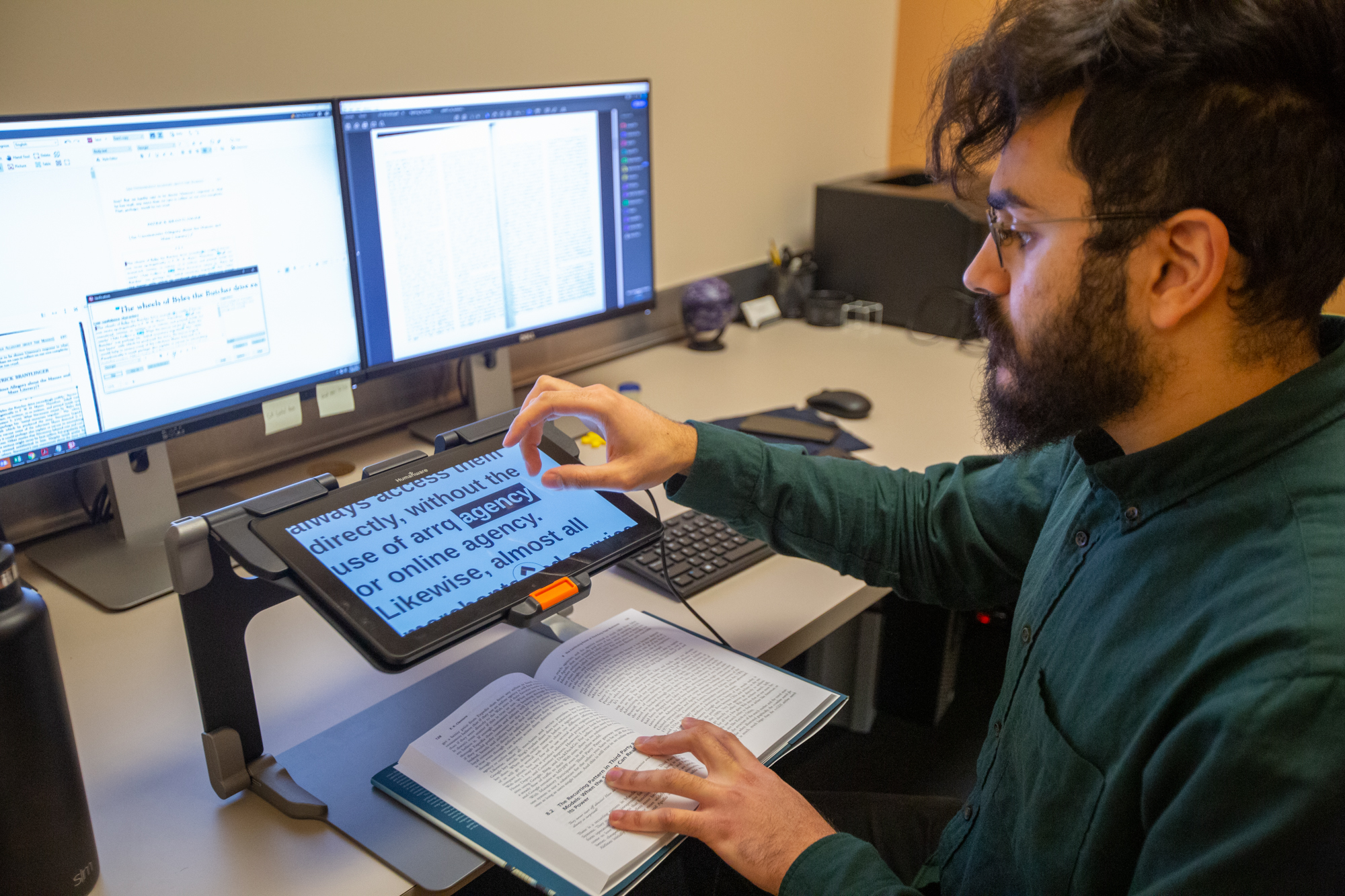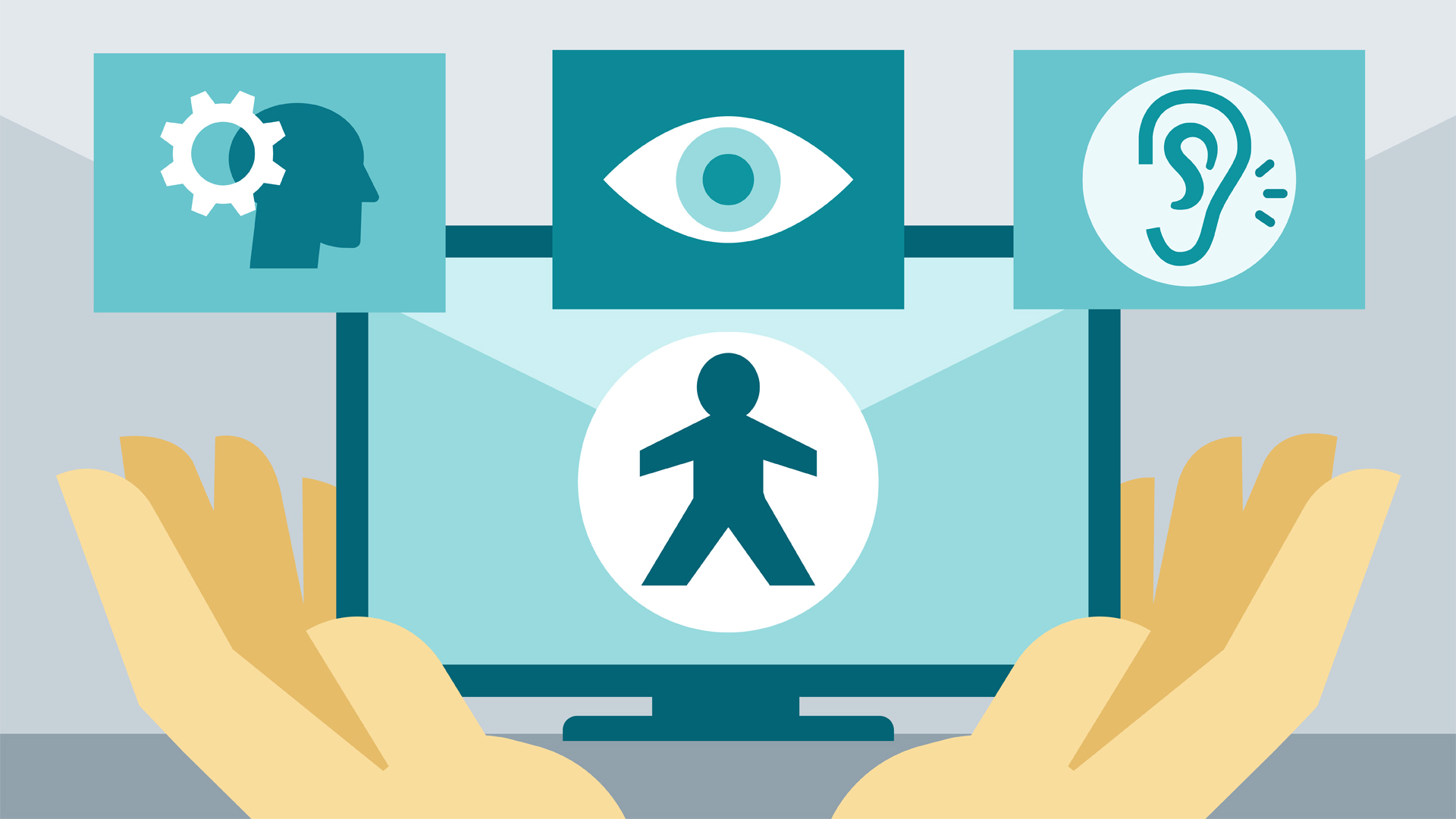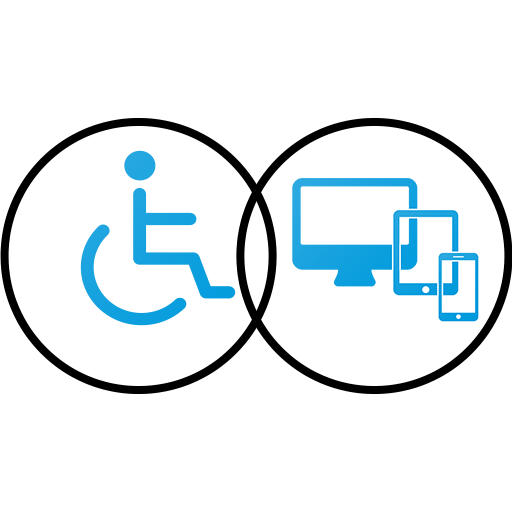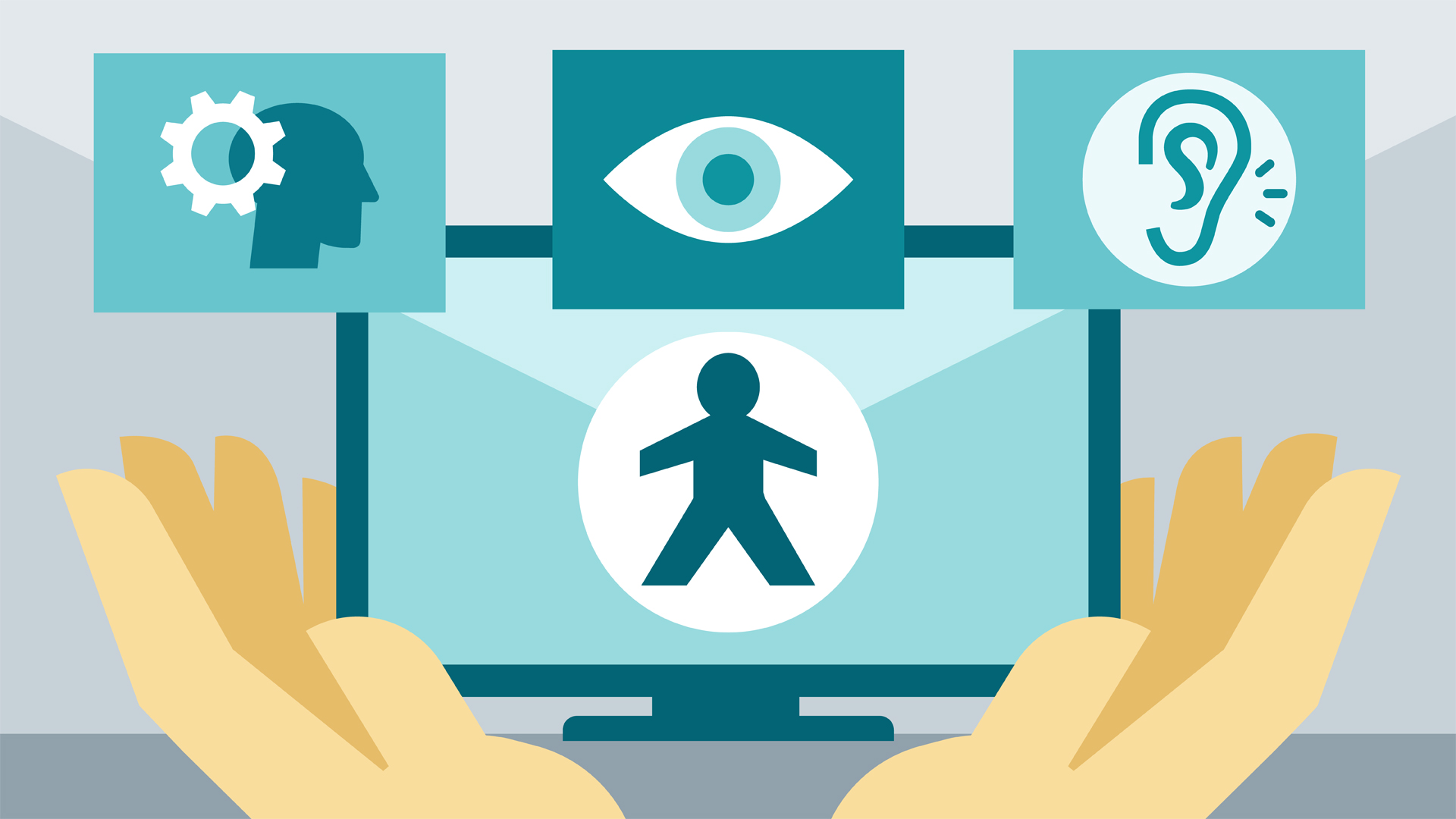The world of disabilities often seems scary and unrelatable to the average person but let me reassure you that’s it’s not. At this session you will learn some about the culture of disability and the etiquette of working with and welcoming people with disabilities into your life.
Events


Social Media and Graphic design are important communication tools at UCLA. At this hour long session you will learn some of the best practices and tips and trick to make your content look great and retain accessibility.

In this training, you will learn about UCLA’s new Canvas learning environment and some of the best practices to ensure that online courses are UCLA are accessible to students with disabilities

People who are blind, low-vision or have dyslexia rely on assistive technologies and screenreading software to “read text out loud” to them. However, many documents and websites created are completely inaccessible or just frustrating for screenreader users. Learn accessible design and content management tools to make it easier for people with disabilities to engage with your website content and documents.

In this live hour-long webinar the UCLA Disabilities and Computing Program will introduce the basics of accessibility testing. The ability to identify accessibility errors is the first step in making your content accessible. This class will focus on HTML accessibility and Document accessibility testing.
Learning Outcomes
By the end of this training you should be able to:

People who are blind, low-vision or have dyslexia rely on assistive technologies and screenreading software to “read text out loud” to them. However, many documents and websites created are completely inaccessible or just frustrating for screenreader users. Learn accessible design and content management tools to make it easier for people with disabilities to engage with your website content and documents.

In the world of online learning/work, the knowledge of how to create accessible documents has become even more important. This 1.5 hour-long webinar will teach you exactly how to do that, as well as how to add accessibility to source documents you might have already created.
Learning Outcomes
By the end of this training you should be able to:

In this live hour-long webinar the UCLA Disabilities and Computing Program will introduce the basics of accessibility testing. The ability to identify accessibility errors is the first step in making your content accessible. This class will focus on HTML accessibility and Document accessibility testing.
Learning Outcomes
By the end of this training you should be able to:

People who are blind, low-vision or have dyslexia rely on assistive technologies and screenreading software to “read text out loud” to them. However, many documents and websites created are completely inaccessible or just frustrating for screenreader users. Learn accessible design and content management tools to make it easier for people with disabilities to engage with your website content and documents.

In the world of online learning/work, the knowledge of how to create accessible documents has become even more important. This 1.5 hour-long webinar will teach you exactly how to do that, as well as how to add accessibility to source documents you might have already created.
Learning Outcomes
By the end of this training you should be able to:

